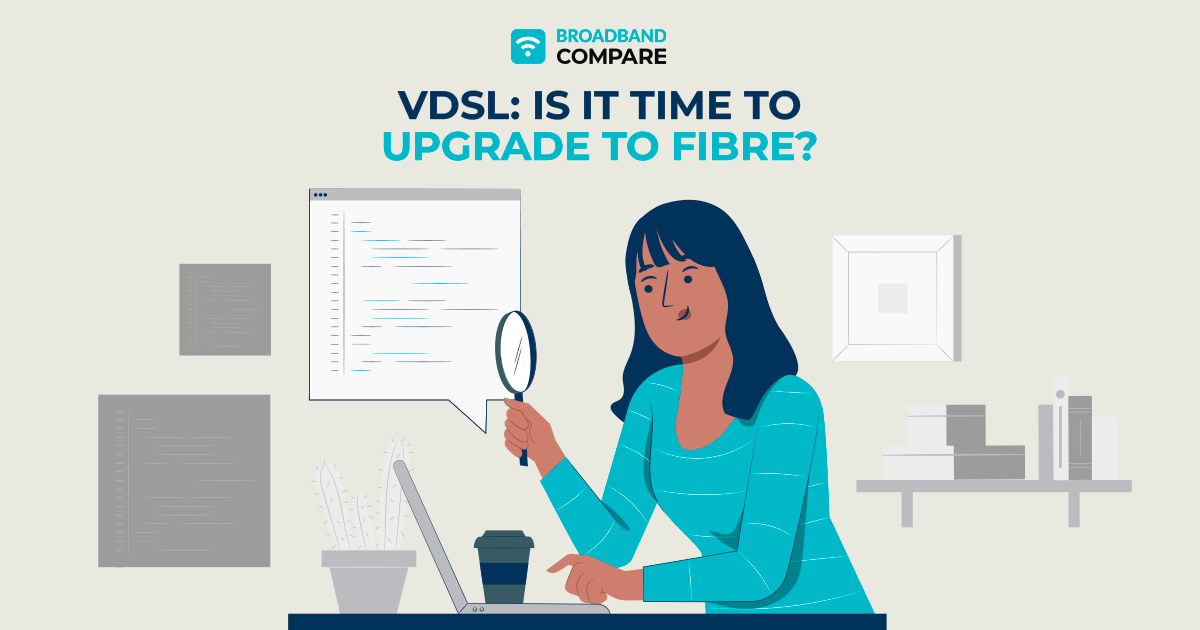
While most of New Zealand runs on fibre, there are a handful of communities who rely on rural options. However, if you are still on VSDL, and have the option to make the switch to fibre, what is holding you back?
Let’s dive into the differences between VDSL and fibre, and why it is time to upgrade.
VDSL is available to most homes in New Zealand. It is a step-up from the older, outdated technology of ADSL. However, VDSL still uses the copper network. This network uses electricity to send data back and forth between devices. It does, however, use the fibre network to access a cabinet on the street, before jumping to copper technology to get the data from the cabinet to your house. This ensures that you have your own household bandwidth and don’t have to compete with neighbours.
While VDSL is a good option for homes that may not have access to fibre, its speeds are a lot slower than fibre. Average speeds sit at about 70 Mbps. In this modern era, you’ll want to consider switching to fibre so you can enjoy its benefits, and ensure that your home is future-proofed.
Using the power of light, fibre optic cables transmit data incredibly fast! This makes it possible to enjoy smooth streaming and lag-free connection. In a busy modern world, it’s important to be able to do your online tasks quickly and efficiently. Fibre empowers you to complete tasks such as work from home activities or study without interruptions, even if there are multiple devices connected to the network at the same time in your home. No more fighting over the internet!
Just make sure you choose the right fibre speed plan for your household. You can check what speed your household needs with our interactive broadband speed calculator, which takes into account your online activities and how many devices you have at home.
Broadband cables work like a pipe. If the pipe is larger, more information can pass back and forth. Fibre cables are capable of transmitting large amounts of information at the same time, a lot more than VDSL and copper! This means that you can have multiple devices connected and in use at the same time. So, busy households can all get on with their online activities – gaming, video calling, streaming, all at the same time, without compromising one another!
Fibre cables have more durable and reliable technology. They can endure storms and changes in temperature a lot better, unlike copper wires. This means that you can stay connected, no matter the weather, and enjoy reliable service at all times.
Fibre technology has high security, which is important for protecting your privacy and information when using the internet. Fibre optic cables are a lot more difficult for hackers to access than copper cables, making them more secure. Cyber security and safety is crucial in this day and age!
Even if you don’t need the speediest internet, it’s a good idea to get fibre if you are eligible. Fibre future-proofs your home, ensuring you aren’t left behind. It also boosts the value of your home! If your home doesn’t have fibre, check if you can get it. You will need to follow a few steps to get it installed. Click the button below to read about these steps, so you can prepare and know how it’ll all happen.
You will also need to find the right fibre plan for your household. It’s a good idea to check what fibre speed your household needs. Make use of our free interactive broadband speed calculator, which will tell you what fibre speed you should be on, based on your online activities and the number of devices you have.
Once you have the speed, jump on our free comparison platform, and compare the fibre plans available to you. This is the most effective way to find the best value deal for your broadband needs, and avoid spending more than you need to. Compare in just a few minutes, and find the plan that will save you money.
It is simple to compare: